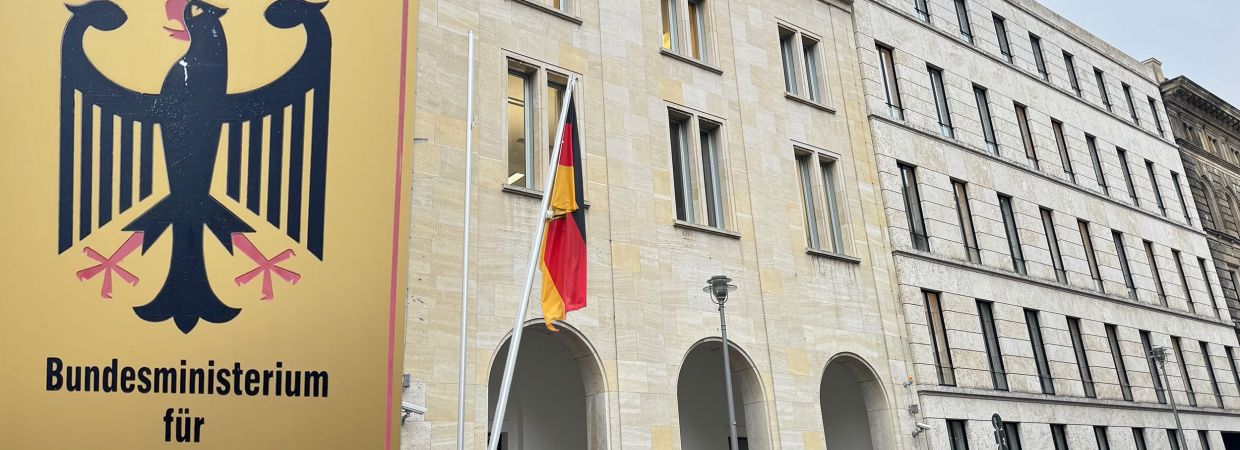english – Hazardous Substances Ordinance: New draft without clarity for pipelines
Waiver of "technical exploration", but still no differentiation for underground pipelines: The latest draft of the Hazardous Substances Ordinance continues to mean high bureaucratic hurdles for local authorities.
Following criticism from the construction industry, the Federal Ministry of Labour and Social Affairs (BMAS) has published a new draft of the Hazardous Substances Ordinance (GefStoffV) . The revision focuses on improving the prevention of work-related cancer, particularly in connection with asbestos.
The main difference in the latest draft version from mid-June is the omission of a "technical investigation". According to the previous version, this would have obliged homeowners and operators of technical installations built in 1993 or earlier to rule out the presence of asbestos, e.g. by means of an expert opinion, prior to any construction measures. It now states: "The person who initiates work on structural or technical installations (initiator) must provide the company carrying out the work with all information conforming to the construction or utilisation history on existing or suspected hazardous substances in writing or electronically before starting the work. The initiator must make reasonable use of the documents available to him to obtain information."
No clarity for underground pipelines
The demand from experts to create more clarity in the ordinance with regard to the special nature of buried pipelines was not fulfilled in the latest revision. "In my opinion, the Hazardous Substances Ordinance should take account of the fact that underground pipes, for whose sewer renovation low-emission procedures are available, do not pose a hazard comparable to that of asbestos in existing buildings. The dangerous release of fibres into the air we breathe is prevented by leaving them in the soil," explained specialist lawyer Dr Victoria von Minnigerode in an interview with RSV. Pipe bursting procedures and pipe lining, and to be able to take the relevant changes into account in the final version of the GefStoffV.
Low-emission procedures no longer only in the annex
After all, according to the current draft, low-emission procedures will continue to be used for company-related notifications, as they apply to the pipe bursting procedure and have been approved (but not yet published) for pipe lining. Unlike in the currently valid Hazardous Substances Ordinance, recognised low-emission procedures are no longer only to be mentioned in the annex. However, the previous specific application in the case of removal of the surface, e.g. during maintenance work, is missing. According to the Hazardous Substances Ordinance, recognised low-emission procedures will in future be "work procedures tested and recognised by the authorities or the statutory accident insurance institutions for activities involving materials containing asbestos that are demonstrably low-risk."
For buried pipelines, the bursting procedure is currently the only recognised low-emission procedure for maintenance in accordance with TRGS 519. The RSV has already received a positive decision from the relevant working group of the Institute for the Protection of Labour (IFA) of the DGUV for its application for the additional inclusion of the "cured-in-place pipe lining" procedure in the list. Listing on the website of the Englisch statutory accident insurance is expected shortly. Tendering and application, including the necessary official approval by the trade supervisory authorities, are already possible.
Criticism of lack of transparency
The RSV is keeping a close eye on the further development of the ordinance. The next step could be a decision by the Federal Cabinet to finalise the Hazardous Substances Ordinance. The association is critical of the ministry's information policy. Until the publication of the latest draft bill a few weeks ago, only the amended versions from March 2023 - i.e. the second draft - could be seen on the BMAS website. Now the third draft has been secretly uploaded, which is dated 1 July 2023. "In response to our enquiry, the BMAS referred us to the currently valid version in December 2023, but it was not visible. This shows how difficult it is to involve associations publicly in this issue," explains RSV Managing Director Reinhild Haacker.
Picture: RSV
